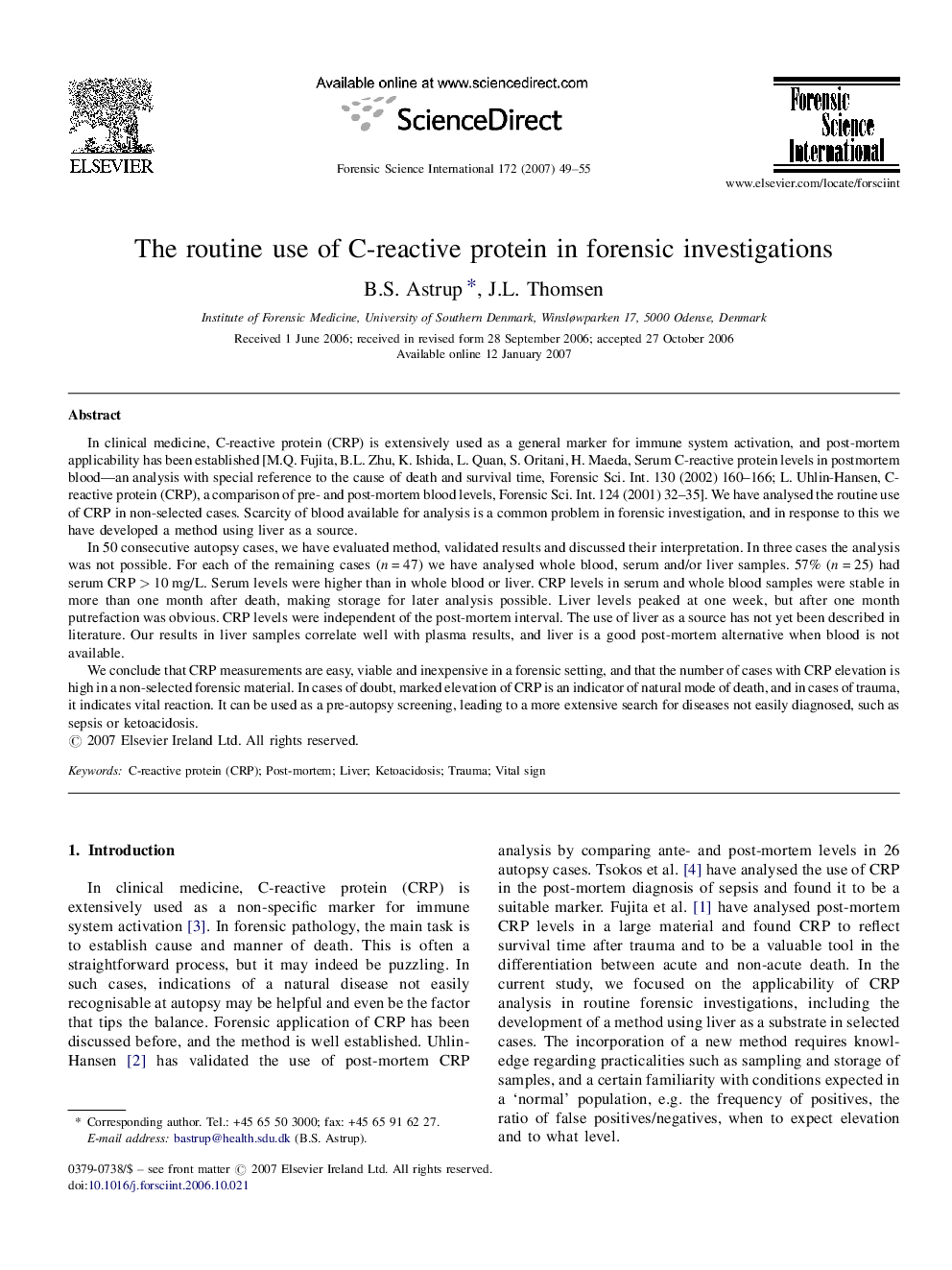| Article ID | Journal | Published Year | Pages | File Type |
|---|---|---|---|---|
| 98187 | Forensic Science International | 2007 | 7 Pages |
In clinical medicine, C-reactive protein (CRP) is extensively used as a general marker for immune system activation, and post-mortem applicability has been established [M.Q. Fujita, B.L. Zhu, K. Ishida, L. Quan, S. Oritani, H. Maeda, Serum C-reactive protein levels in postmortem blood—an analysis with special reference to the cause of death and survival time, Forensic Sci. Int. 130 (2002) 160–166; L. Uhlin-Hansen, C-reactive protein (CRP), a comparison of pre- and post-mortem blood levels, Forensic Sci. Int. 124 (2001) 32–35]. We have analysed the routine use of CRP in non-selected cases. Scarcity of blood available for analysis is a common problem in forensic investigation, and in response to this we have developed a method using liver as a source.In 50 consecutive autopsy cases, we have evaluated method, validated results and discussed their interpretation. In three cases the analysis was not possible. For each of the remaining cases (n = 47) we have analysed whole blood, serum and/or liver samples. 57% (n = 25) had serum CRP > 10 mg/L. Serum levels were higher than in whole blood or liver. CRP levels in serum and whole blood samples were stable in more than one month after death, making storage for later analysis possible. Liver levels peaked at one week, but after one month putrefaction was obvious. CRP levels were independent of the post-mortem interval. The use of liver as a source has not yet been described in literature. Our results in liver samples correlate well with plasma results, and liver is a good post-mortem alternative when blood is not available.We conclude that CRP measurements are easy, viable and inexpensive in a forensic setting, and that the number of cases with CRP elevation is high in a non-selected forensic material. In cases of doubt, marked elevation of CRP is an indicator of natural mode of death, and in cases of trauma, it indicates vital reaction. It can be used as a pre-autopsy screening, leading to a more extensive search for diseases not easily diagnosed, such as sepsis or ketoacidosis.
